It’s getting harder to resist the draw of full electric cars. Most on offer seem to be SUVs but with the Peugeot e208 you’ve got a zero emission super mini. It looks snappy, does 340 km between charges and has no major downsides over the combustion engine version.
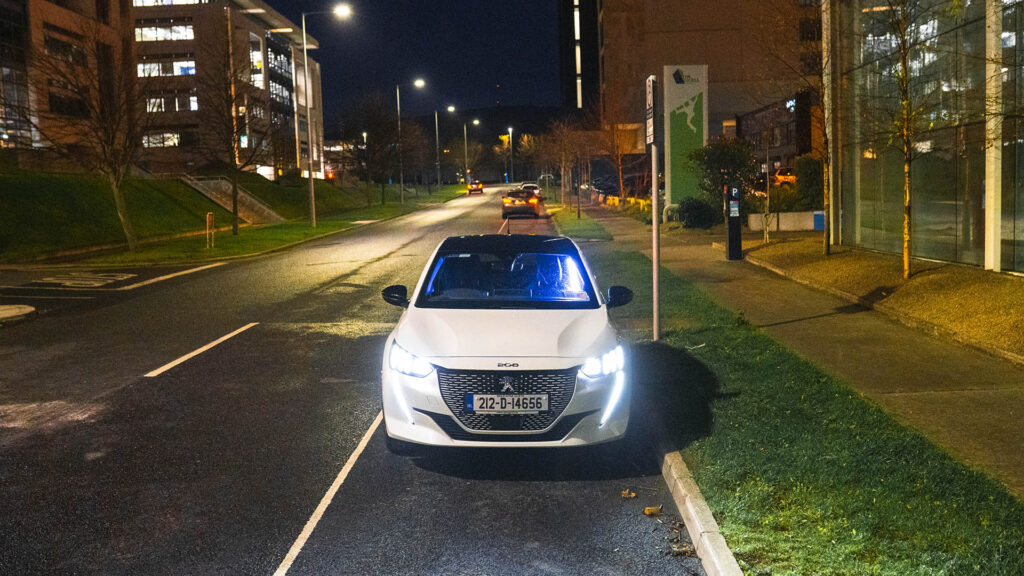
Special mention : Great Peugeot design with runabout electric range. A VRT rebate of up to €5,000, SEAI Grant of up to €5,000 and SEAI grant of €600 for home charging point installation by the ESB.
Needs work : It’s very tight in the back seats and they only split 60/40. The charging cables take up most of the useable boot space.
| BHP 136 BHP | Electric / Auto |
| 0-100 km/h in 8.1 seconds | Road Tax €120 |
| Price: €28,305 | Boot space 311 / 1,106 litres Range 340 km (in eco mode) |
In the future all small cars will need to be developed on platforms that can support full electric as well as conventional ICE cars. The Peugeot 208 is an exception as they offer you a choice of powertrain in petrol, diesel or electric in the same way that you’d choose a trim option. The battery-powered variant, the e-208, shares all the same engineering that we’ve already seen in the PSA groups two other small battery-powered cars, the Opel Corsa-e and the DS3 Crossback. The sophisticated CMP common modular platform and those same underpinnings allow for a new generation of platform sharing.
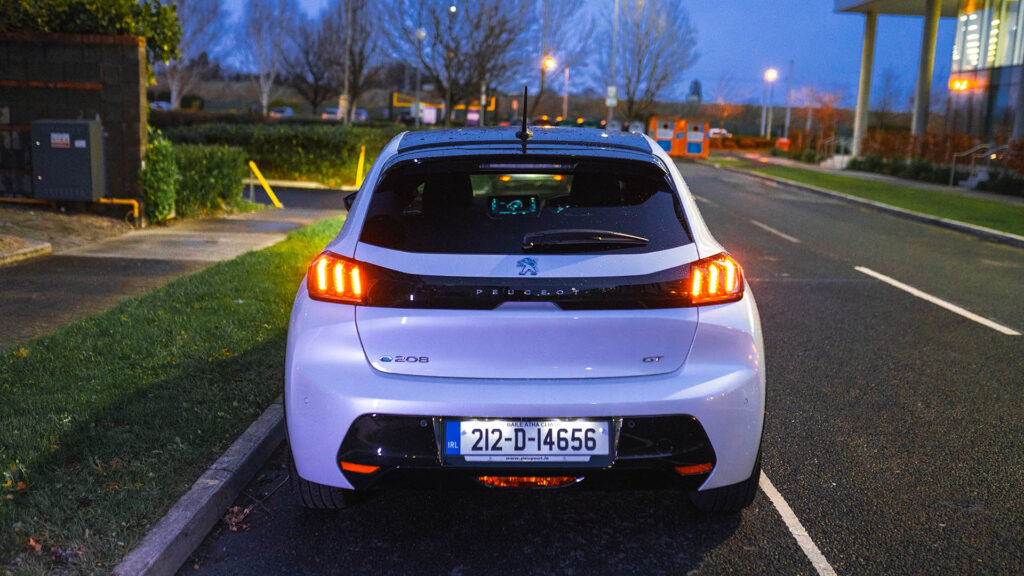
The Peugeot e-208’s 50 kilowatt-hour lithium-ion battery is mated to a 100 kilowatt electric motor putting out 136 bhp and working through the usual single speed automatic transmission. Like all electric vehicles this one develops all its torque at once. There’s 260 newton meters of torque in total and this car can take itself from rest to 100 km/h in just 8.1 seconds. This zero emissions vehicle has a drivetrain that adds over 300 kilos of bulk which other small battery-powered little hatches manage a little better. This is shown by the e208’s WLTP rated 340 km driving range. Renault’s Zoe and BMW’s i3 manage to stretch the range a little further.
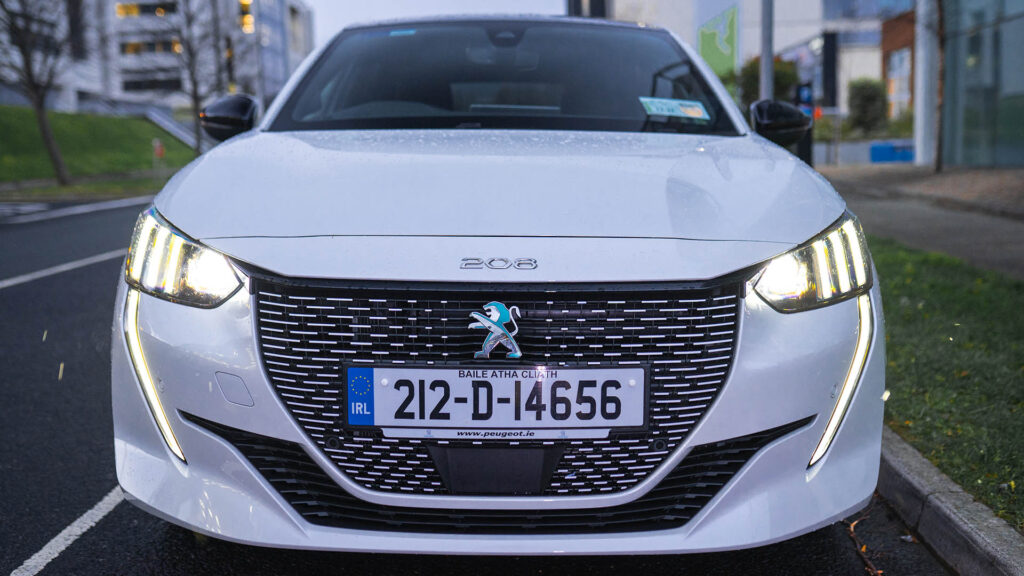
Forward-thinking super mini buyers who are looking to make the expensive switch into all electric motoring need to look into their use and the distance/range required for their daily commutes. The quoted range from Peugeot will only be distantly possible if you habitually drive your e208 in the sport setting which will be necessary to release the full 136 bhp. You will however be more likely to instead engage the use of eco mode more frequently, which drops power output right down to 83 bhp. Using this setting in the e-208 around town it makes a strange polyphonic sound at low speeds to warn pedestrians of its impending approach. Above 30 km/h though all you can hear is a bit of tyre roar from the eco-molded Michelin rubber.
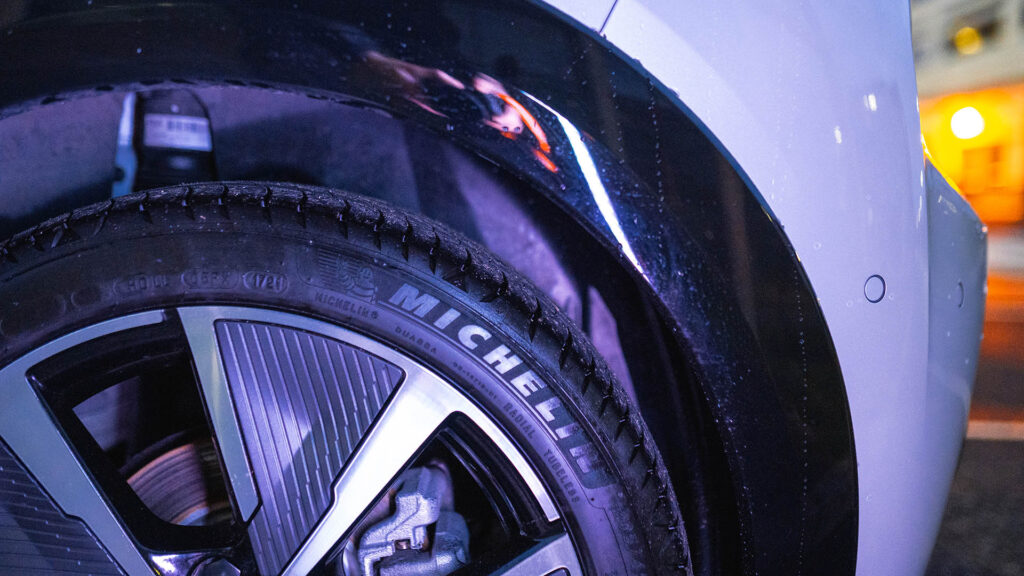
All that extra weight affects the dynamics, things you’ll only really notice if you’re trying to throw this car about in a manner that a typical owner hardly ever would. Most of the time the battery’s additional bulk is well disguised, the ride quality is actually class leading, smoothing small bumps and speed humps in a way that’s pleasingly French.
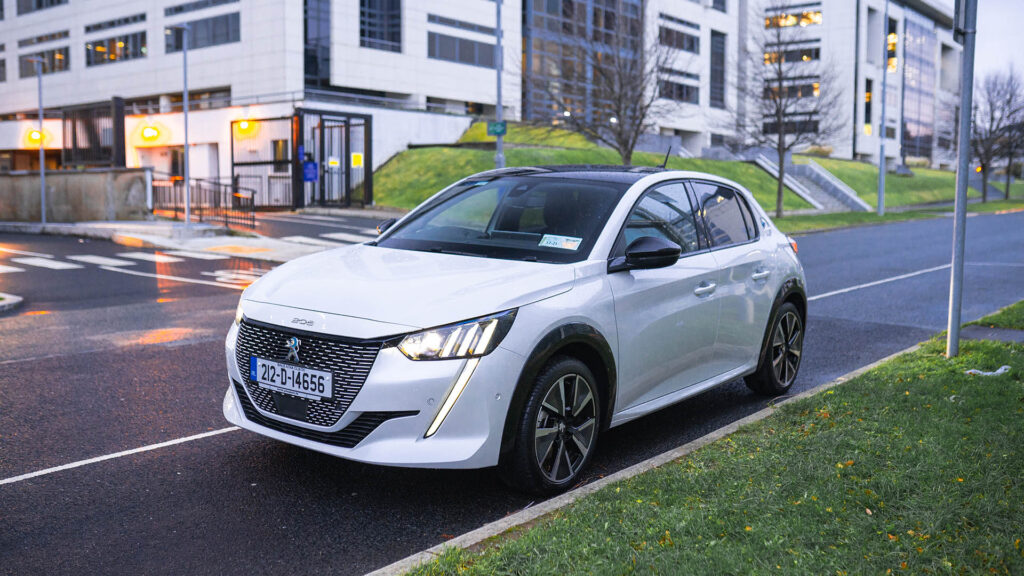
The all-electric e208 is distinguished from Peugeot’s other models using flecks of colour on the front grille and a more unusual finish for the lion badge which appears to change color depending on your viewing angle. Most versions of this model will be ordered in either GT Line or top GT spec. These top two variants are recognisable by the diamond black roof colouring and glossy black wheel arch flares which streamline the body making the wheel diameter of the 17-inch wheel rims appear larger. On the premium versions these rims come with screw-in customizable inserts which not only improve the aerodynamics but apparently reduce curb weight by 3.6 kilos at the rear. The avant-garde theme continues with the 3D tail light featuring the brand’s trademark three claw signature and they’re linked by a black band running the width of the boot lid emphasizing this second generation 208 model’s extra width; the rear diffuser features a gloss black finish.
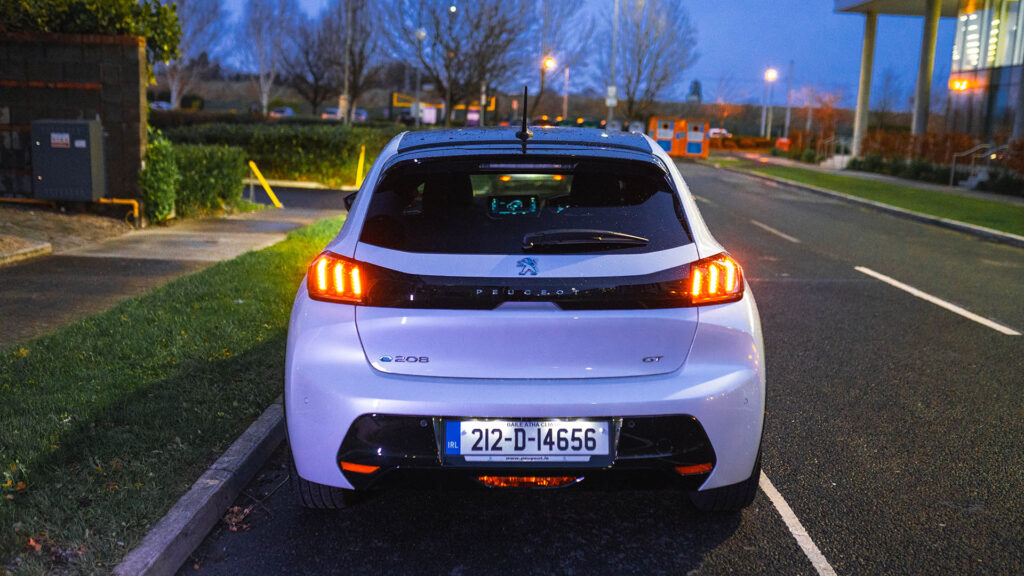
With the usual i-Cockpit position in a 208 that sees you viewing the instrument binnacle over the upper rim of the steering wheel. On all but the entry-level version of this model you’ll find that the concept has been further developed with the addition of this clever 3D instrument binnacle display. This shows critical information like speed and navigational instructions projected in hologram form from the inner roof of the vehicle onto a piece of slanted perspex in the foreground. Other secondary features are on a screen set further back and a button to the left of the steering wheel allows you to change the format according to your preferences. More media technology sits to your left in the form of the usual center dash touchscreen normally 7 inches in size but optionally available in 10-inch form. Either way the monitor includes plenty of functions. There’s a dedicated display to operate all the climate functions and that means switching from your selected main screen every time you want to change temperature or fan speed. Shortcuts come in seven stylized piano style keys below the monitor positioned in front of a row of touch sensitive pads.
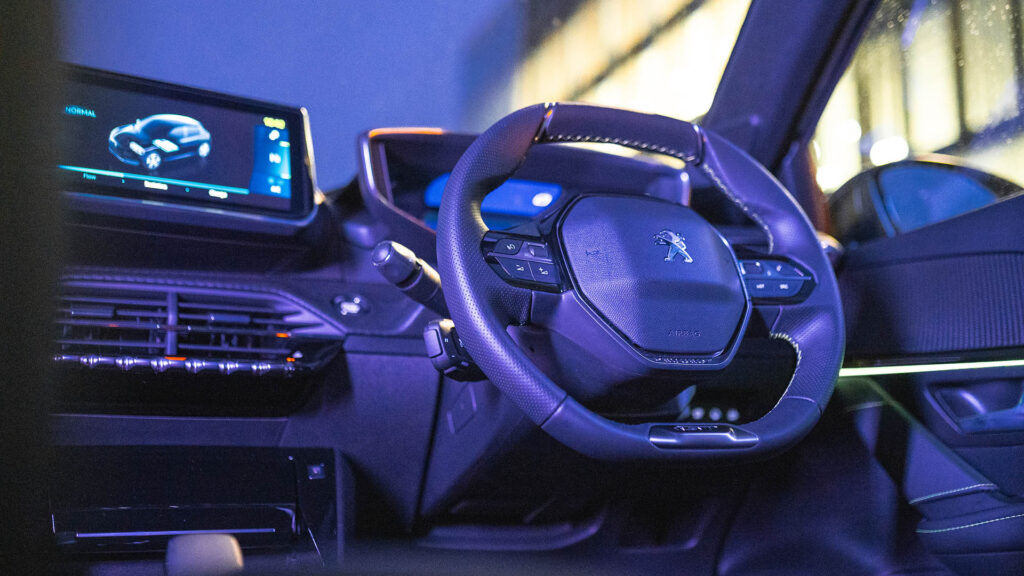
The seats are reasonably comfortable and there’s decent ergonomics with a reasonable amount of cabin storage space. There are plenty of media connectivity points on most models and you can get a wireless charging matt with its own neat lidded compartment.
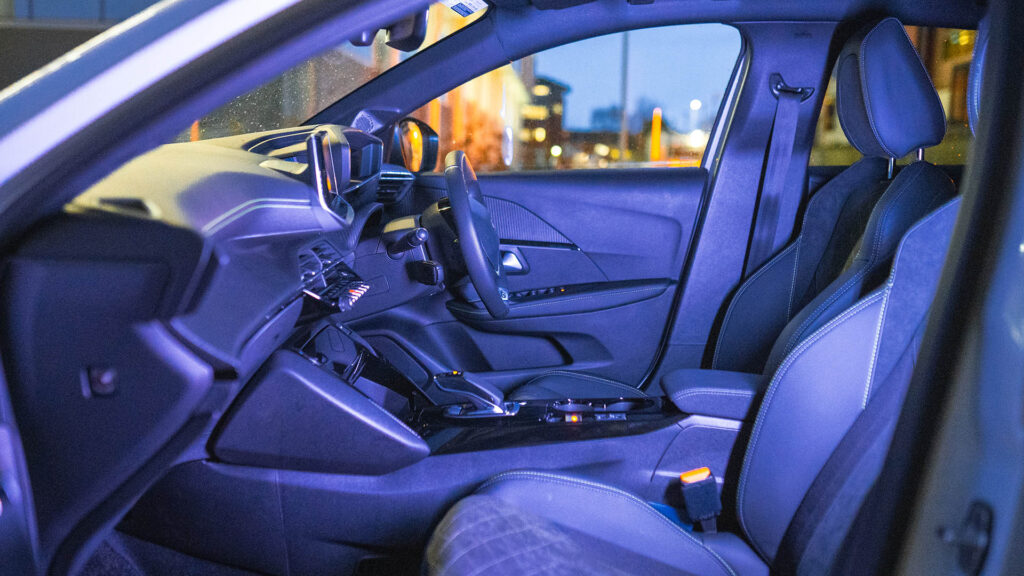
A casualty of Peugeot’s decision to design just one 208 floor plan, the amount of backseat space on offer is limited. This is due to the chassis which needed to allow space for the electric version’s battery pack positioned beneath the back seat. In the e-208 at least you feel that spatial compromise is in place for good reason. It’s certainly as cramped as the super mini norm but is fine for children who will most commonly travel back there. For some reason it does feel a fraction more roomy in the back than it does in this car’s Corsa cousin. The curvature of the front seat backs is designed to improve knee room and there’s a notably low central transmission tunnel with loads of room to poke your feet beneath the front seats. It seems a bit mean that coat hooks are missing from the grab handles and you don’t get interior lights in the back unless you go for a top spec model. You do get several things which are lacking in this model’s Corsa cousin, namely nicely presented stitched door cards, seat back pockets and on most models unusually for a car in this class, connectivity points. From the mid-range trim upwards there are two usb ports as standard.
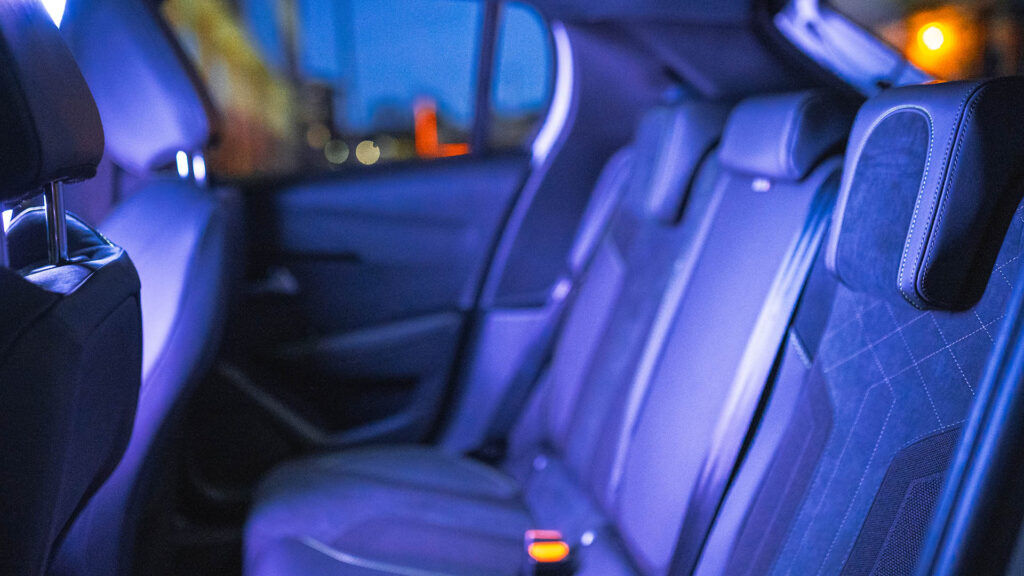
There’s no compromise in boot space which is 311 litres just like in any other 208 it’s quite a usable sized space with 674 millimeters of length and 1018 millimeters of width between the wheel arches. There’s no seat folding cleverness stuff like adjustable seat backs for awkwardly shaped loads or a ski hatch or a 40 20 40 rear bench split you would think that super mini designers might be building that stuff in by now so instead there’s just a straightforward 60 40 rear bench split which once it’s down reveals 1 106 liters of capacity when you load up to the roof.
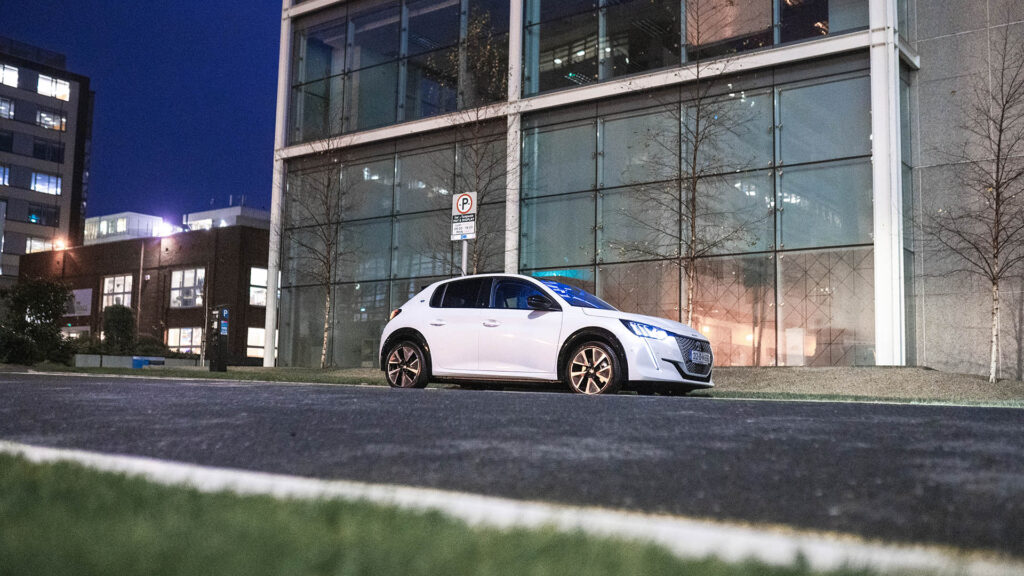
In base Active spec an e208 will set you back around €28,305 and that’s after the available grants have been applied. e208 buyers get the benefit of the My Peugeot app package which allows you to check data such as fuel consumption, maintenance or servicing alerts and it can also save the location of the car remembering where you’ve parked. The app’s home page gives you essential data like average consumption and your mileage plus you can also use that app to look at your previous maintenance appointments and book service visits. The My Peugeot app additionally includes a range of specific services for e-208 owners including remote services and public charging solutions. The other PSA group model with this car’s drivetrain is a small crossover SUV, the DS3 Crossback e-Tense which is priced from €38,811. This little Peugeot’s closest rival from outside the PSA group is the market leading Renault Zoe that also sells mainly in the €27k to €32k bracket but in 50kw/h battery form it has a slightly higher driving range yet doesn’t look nearly as stylish as the e208.
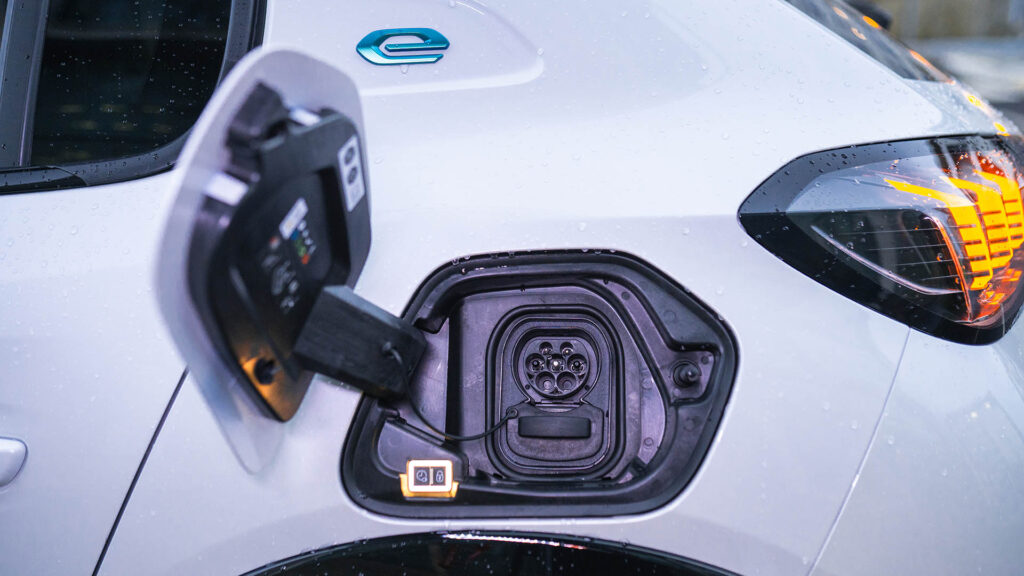
The competition comes in the form of the Honda -e at €29,995 and the Mazda CX-30 at €30,775, the Mini electric at €42,405. All three of those cars are smaller inside than the e-208 and have smaller batteries which means a reduced driving range.
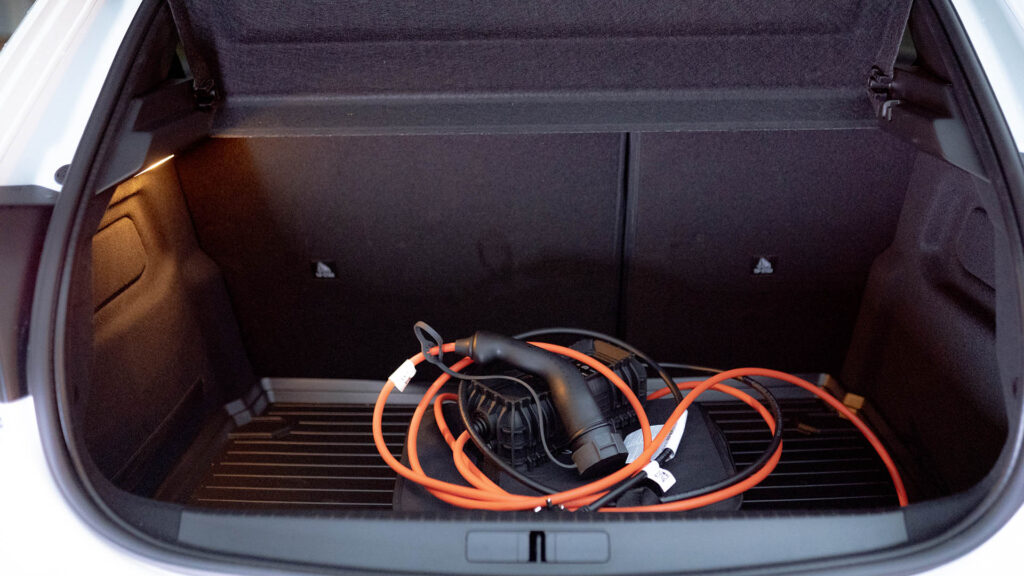
You should be quite satisfied by the standard spec on offer; entry-level Active spec only gives you the very basics but if you can stretch at least as far as the mid-range Allure trim then you’ll get niceties like 16-inch alloy wheels and the 3D i-Cockpit configurable head-up instrument panel. The cabin is marked out by the addition of part leather effect upholstery an electrochrome rear view mirror and automatic climate control functionality for the air conditioning quite a few prospective e208 buyers will be tempted by the sportier look of GT Line trim which offers 17-inch two-tone diamond cut alloy wheels plus diamond black roof finishing. There’s also gloss black wheel arch extensions and gloss black diffuser effect trim for the lower part of the rear bumper.
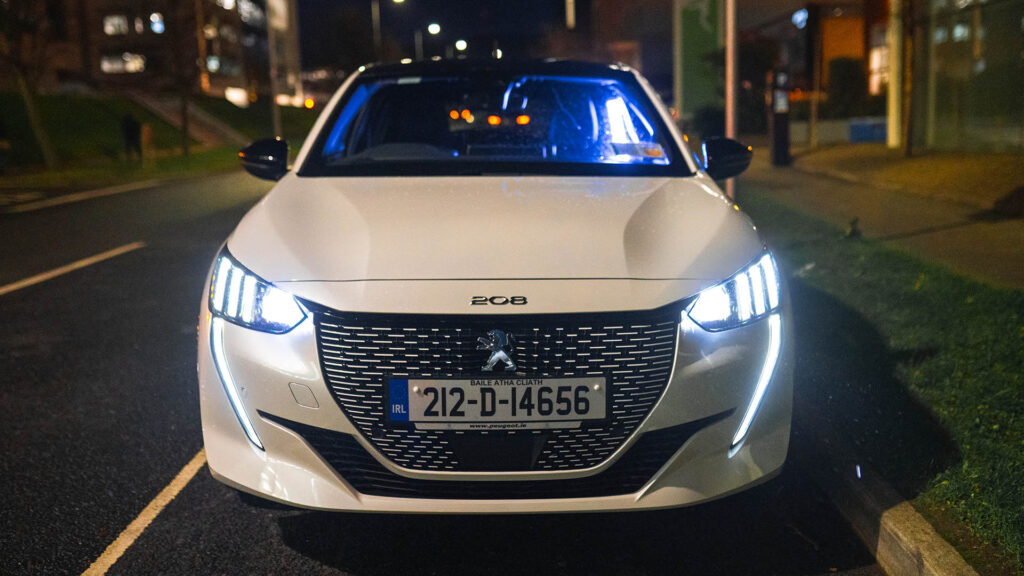
As an EV owner it goes without saying that you’ll need off street parking and you’ll need to get a wall box installed, some of that will be covered by the available government grants. With the wall box in place a full charge from empty will take seven and a half hours, if your property happens to have a three-phase electricity supply though and you pay extra to have your e208 standard 7.4 kilowatt on-board charger upgraded to 11 kilowatt spec then that charging time can be reduced to just five hours.
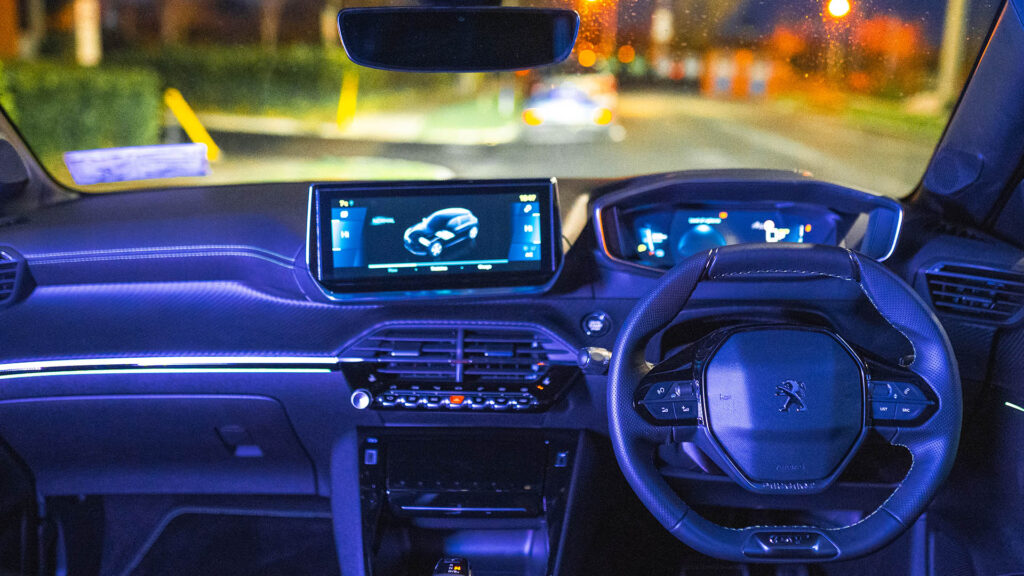
Bear in mind that with all EVs the quoted range figure drops considerably in winter weather and on long motorway journeys in the case of the e-208 range can drop to around 240 km. As an e-208 owner you’ll need to know that getting anywhere near the quoted range figure will necessitate staying in eco mode. By activating the sport setting you will reduce your range by around 10 percent.
